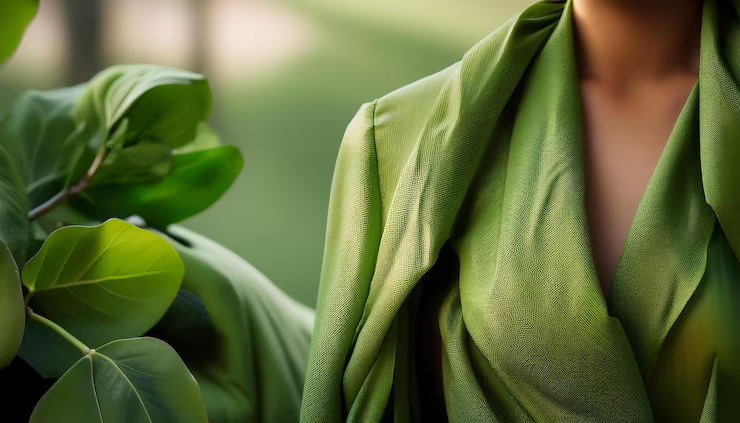As the fashion industry faces growing criticism for its environmental impact, eco friendly cloth has emerged as a conscious and stylish solution. Today’s consumers are no longer satisfied with just looking good—they want their clothes to do good, too. Whether you’re a fashion-forward individual or a brand seeking to embrace sustainability, making the switch to eco-conscious apparel is both a responsible and rewarding move.
This in-depth guide explores the types, benefits, and future of eco-friendly cloth and clothing, empowering you to make smarter wardrobe choices.
What Is Eco-Friendly Clothing?
Eco-friendly clothing, also known as sustainable or green fashion, refers to garments made with materials and processes that reduce harm to the environment and promote ethical labor practices. These clothes are produced with:
- Natural or recycled fibers
- Non-toxic dyes and finishes
- Minimal water and energy use
- Fair labor standards
They are designed to last longer, decompose naturally (if biodegradable), and leave behind a smaller ecological footprint.
Top Eco-Friendly Fabrics You Should Know
1. Organic Cotton
Grown without harmful pesticides or synthetic fertilizers, organic cotton uses 91% less water than conventional cotton and is GOTS-certified for its eco-standards.
- Soft and breathable
- Perfect for everyday wear, baby clothes, and undergarments
- Compostable and safe for sensitive skin
2. Hemp Fabric
One of the most sustainable textiles on Earth, hemp is naturally pest-resistant and requires very little water or land to grow.
- Strong and durable
- Becomes softer with every wash
- UV-resistant and breathable
Ideal for jeans, shirts, and summer clothing.
3. TENCEL™ / Lyocell
Made from sustainably harvested wood pulp, TENCEL is a closed-loop process fabric where 99% of the solvent is recycled.
- Silky smooth and lightweight
- Moisture-wicking and antibacterial
- Fully biodegradable
Often used in activewear, loungewear, and luxury eco fashion.
4. Recycled Polyester (rPET)
Made from post-consumer plastic bottles, this fabric reduces landfill waste and energy use compared to virgin polyester.
- Durable and wrinkle-resistant
- Common in athletic wear and outerwear
- Often blended with natural fibers for comfort
5. Bamboo Rayon
Though not all bamboo fabrics are created equally, mechanically processed bamboo (not chemically) is eco-friendly.
- Hypoallergenic and antimicrobial
- Thermoregulating — cool in summer, warm in winter
- Great for socks, underwear, and sleepwear
Benefits of Choosing Eco-Friendly Clothing
1. Environmental Preservation
Eco-friendly clothing production saves water, reduces greenhouse gas emissions, and avoids toxic chemicals that can pollute ecosystems.
2. Ethical Production
Most sustainable fashion brands ensure fair wages, safe working conditions, and community upliftment, supporting human rights in textile supply chains.
3. Health and Comfort
Natural fibers like organic cotton and bamboo are gentle on skin, free of chemical irritants, and ideal for allergy-prone individuals.
4. Longer Lifespan
Sustainable clothes are often better made and last longer than fast fashion, saving you money in the long run and reducing waste.
How to Build a Sustainable Wardrobe
Start with Essentials
Begin by replacing staple pieces with eco alternatives:
- Organic cotton T-shirts
- Bamboo socks and undergarments
- Recycled polyester jackets
Buy Less, Wear More
Adopt a “quality over quantity” mindset. Choose timeless, versatile items that you can wear in multiple ways, reducing the need to follow fast-changing trends.
Support Second-Hand and Upcycled Fashion
Thrift shops, clothing swaps, and upcycled garments are excellent ways to reduce clothing waste while staying stylish.
Eco-Friendly Fashion for Businesses
If you’re a fashion brand or retailer, shifting to eco-conscious production offers long-term benefits:
- Improved brand reputation
- Access to a growing base of conscious consumers
- Eligibility for green certifications and tax benefits
- Opportunities for sustainable storytelling and marketing
Offer transparency by sharing your materials sourcing, production ethics, and environmental commitments on your website or packaging.
Challenges in the Sustainable Fashion Industry
While the shift to eco-friendly clothing is essential, it’s not without challenges:
- Higher costs due to ethical labor and sustainable materials
- Limited accessibility in some regions
- Greenwashing by brands falsely claiming to be eco-conscious
Consumers must stay informed and demand authenticity by researching brands and verifying their claims through trusted certifications.
The Future of Eco-Friendly Clothing
Technology is transforming the sustainability game. Expect to see:
- Bio-fabricated textiles like mushroom leather and lab-grown cotton
- Smart recycling systems that turn old garments into new fibers
- On-demand manufacturing to reduce overproduction and waste
Fashion is evolving, and eco-friendly cloth will soon be the new normal—not the niche.
Final Thoughts: Dress with a Purpose
Switching to eco-friendly clothing is not just a trend—it’s a lifestyle shift with far-reaching benefits for the planet, workers, and consumers. With more brands and shoppers embracing this movement, the fashion industry is finally aligning style with sustainability.








